Refer to the exhibit.
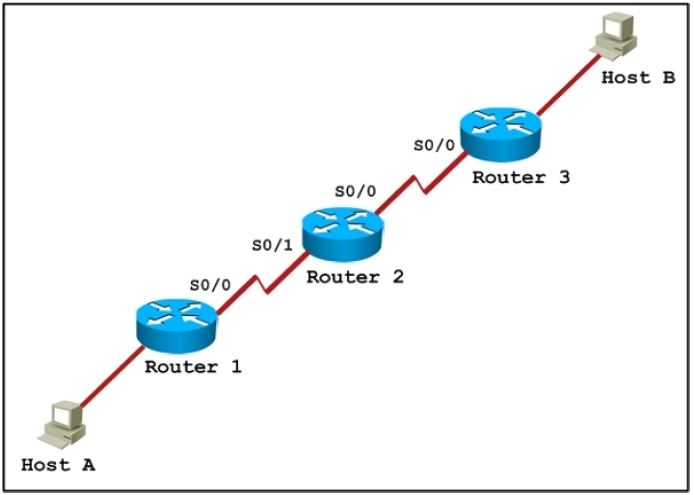
Host A pings interface S0/0 on router 3. What is the TTL value for that ping?
A. 252
B. 253
C. 254
D. 255
Refer to the exhibit.

Host A pings interface S0/0 on router 3. What is the TTL value for that ping?
A. 252
B. 253
C. 254
D. 255
A network administrator is verifying the configuration of a newly installed host by establishing an FTP connection to a remote server. What is the highest layer of the protocol stack that the network administrator is using for this operation?
A. application
B. presentation
C. session
D. transport
E. internet
F. data link
Refer to the exhibit.
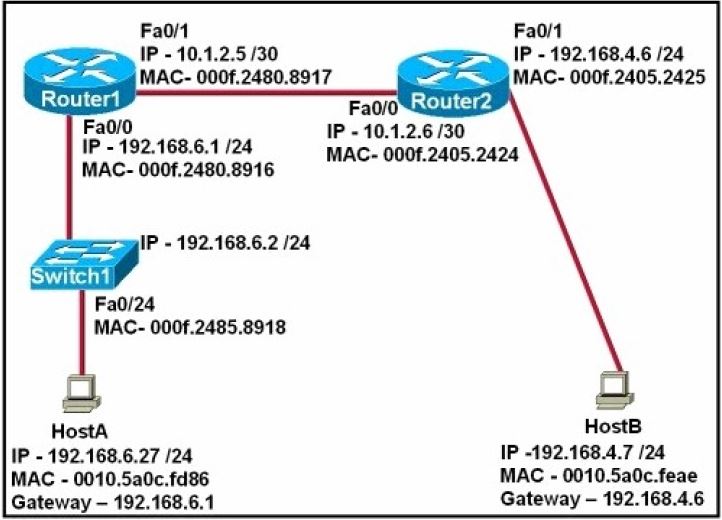
After HostA pings HostB, which entry will be in the ARP cache of HostA to support this transmission?
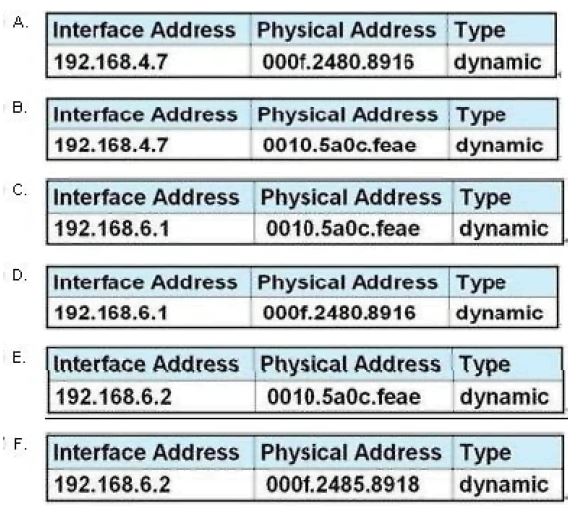
A. Exhibit A
B. Exhibit B
C. Exhibit C
D. Exhibit D
E. Exhibit E
F. Exhibit F
A network interface port has collision detection and carrier sensing enabled on a shared twisted pair network. From this statement, what is known about the network interface port?
A. This is a 10 Mb/s switch port.
B. This is a 100 Mb/s switch port.
C. This is an Ethernet port operating at half duplex.
D. This is an Ethernet port operating at full duplex.
E. This is a port on a network interface card in a PC.
A receiving host computes the checksum on a frame and determines that the frame is damaged. The frame is then discarded. At which OSI layer did this happen?
A. session
B. transport
C. network
D. data link
E. physical
Which of the following correctly describe steps in the OSI data encapsulation process? (Choose two.)
A. The transport layer divides a data stream into segments and may add reliability and flow control information.
B. The data link layer adds physical source and destination addresses and an FCS to the segment.
C. Packets are created when the network layer encapsulates a frame with source and destination host addresses and protocol-related control information.
D. Packets are created when the network layer adds Layer 3 addresses and control information to a segment.
E. The presentation layer translates bits into voltages for transmission across the physical link.
Refer to the graphic.
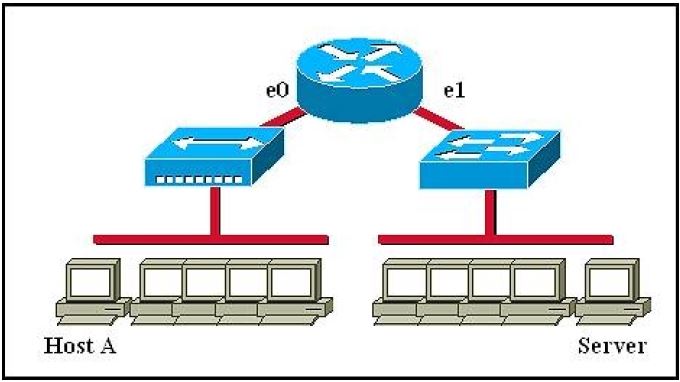
Host A is communicating with the server. What will be the source MAC address of the frames received by Host A from the server?
A. the MAC address of router interface e0
B. the MAC address of router interface e1
C. the MAC address of the server network interface
D. the MAC address of host A
Refer to the exhibit.
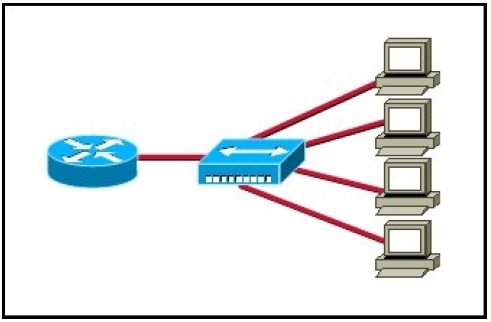
What two results would occur if the hub were to be replaced with a switch that is configured with one Ethernet VLAN? (Choose two.)
A. The number of collision domains would remain the same.
B. The number of collision domains would decrease.
C. The number of collision domains would increase.
D. The number of broadcast domains would remain the same.
E. The number of broadcast domains would decrease.
F. The number of broadcast domains would increase.
Which three statements accurately describe Layer 2 Ethernet switches? (Choose three.)
A. Spanning Tree Protocol allows switches to automatically share VLAN information.
B. Establishing VLANs increases the number of broadcast domains.
C. Switches that are configured with VLANs make forwarding decisions based on both Layer 2 and Layer 3 address information.
D. Microsegmentation decreases the number of collisions on the network.
E. In a properly functioning network with redundant switched paths, each switched segment will contain one root bridge with all its ports in the forwarding state. All other switches in that broadcast domain will have only one root port.
F. If a switch receives a frame for an unknown destination, it uses ARP to resolve the address.
Where does routing occur within the DoD TCP/IP reference model?
A. application
B. internet
C. network
D. transport